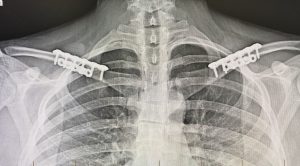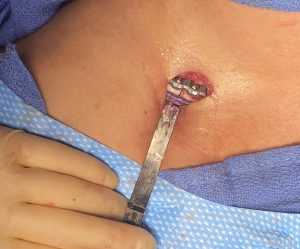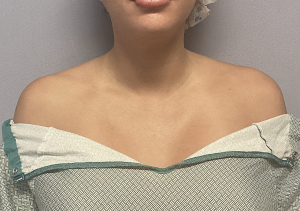Background: Shoulder narrowing is a conceptually straightforward reduction of the length of the clavicle bone. But executing it successfully within the confines of a small skin incision imposes some technical challenges. And there is little room for error in ensuring that a successful bony union occurs across the gap between the two bone ends. Getting the heavy shoulder side of the outer clavicle end up against the more stable inner sternal side of the bone in close apposition and then holding it there while applying plate and screw fixation is never easy.
Clavicle reduction osteotomies are often compared to clavicle fractures. But that seemingly obvious comparison is not as accurate as it seems on closer evaluation. The fracture lines of most clavicle fractures are irregular and not completely linear. They often run at oblique angles to the length of the bone. These fractures lines have much greater surface area of contact than a 90 degree osteotomy line used in clavicle reductions. As a result they can heal faster and more completely with more surface area to stick together. While the clavicle osteotomy is much shorter with far less bone surface area to contact it is still important to get the two ends as close as possible and minimize any gap between the two bone ends.
Case Study: This female desired to have more narrow shoulders. Her shoulders had more of a square shape with a bideltoid distance of 48cms.



Case Highlights:
1) Shoulder reduction relies on good apposition between the two blunt cut clavicle bone ends and the stability of that union..
2) The section of clavicle bone removed is located at the medial end of the mid-shaft.
3) The goal is a 1mm or less bone gap between the two stabilized bone ends.
Dr. Barry Eppley
Indianapolis, Indiana




